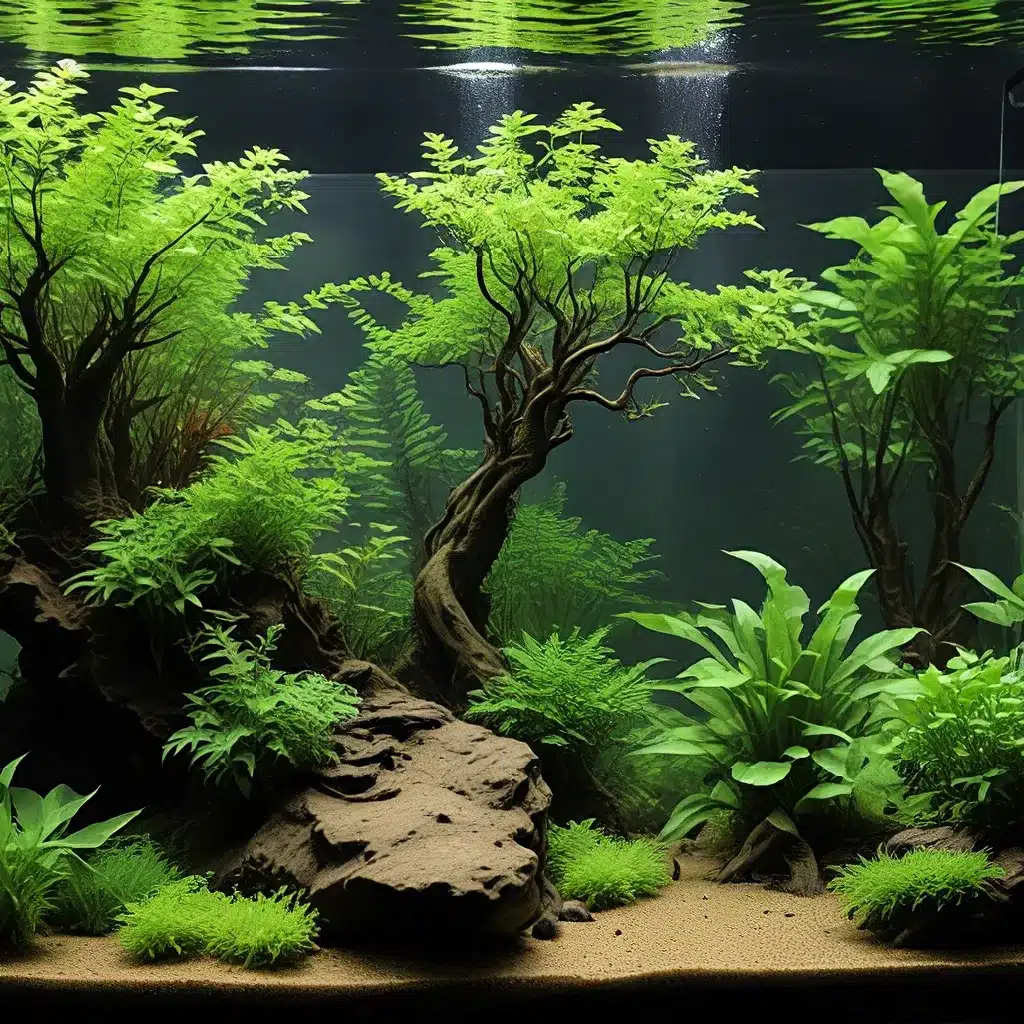
Unlocking the Beauty and Complexity of Natural Aquarium Ecosystems
Aquarium keeping is a captivating hobby that allows us to bring the wonders of the underwater world into our homes. However, many aquarists struggle to replicate the intricate balance and aesthetic appeal of natural aquatic environments. Biotope aquariums offer a solution, enabling enthusiasts to create meticulously designed habitats that mimic the beauty and diversity of real-world ecosystems.
In this comprehensive guide, we will delve into the art of biotope aquarium creation, exploring the step-by-step process of replicating authentic underwater environments within the confines of your own aquarium. Whether you’re drawn to the serene blackwater streams of the Amazon basin or the vibrant coral reefs of the Indo-Pacific, this article will equip you with the knowledge and techniques to bring these natural wonders to life.
The Allure of Biotope Aquariums
Biotope aquariums are more than just stunning visual displays; they offer a unique opportunity to immerse yourself in the natural world. By carefully replicating the specific environmental conditions and inhabitants of a particular aquatic ecosystem, you can gain a deeper appreciation for the intricate balance and diversity that exists in nature.
These specialized aquariums provide a window into the diverse habitats that serve as the birthplace for many of our beloved aquarium fish and plants. From the lush, tannin-stained waters of the Rio Negro to the kaleidoscopic coral gardens of the Great Barrier Reef, each biotope aquarium represents a unique ecological snapshot, allowing you to witness the remarkable adaptations and behaviors of its inhabitants.
Understanding Biotope Aquarium Design
Crafting a successful biotope aquarium requires a meticulous approach that considers a multitude of factors, from water chemistry to substrate composition and aquascaping techniques. The key to achieving an authentic and visually stunning biotope lies in understanding the specific environmental conditions and species assemblages found in the target ecosystem.
As the experts at Tannin Aquatics have emphasized, “Nature is the best designer.” By closely observing and studying the natural habitats of your desired fish and plant species, you can recreate the essential elements that make these ecosystems thrive.
Water Parameters: The Foundation of a Biotope
The water parameters of a biotope aquarium are the foundation upon which the entire ecosystem is built. Factors such as pH, hardness, and dissolved organic compounds must be carefully considered and replicated to ensure the health and well-being of your aquarium inhabitants.
For example, in the blackwater environments of the Amazon basin, the water is typically acidic, with a low pH and soft, tannin-stained appearance. Mimicking these conditions by using peat, driftwood, and leaf litter in your substrate is crucial for creating an authentic biotope.
Substrate and Aquascaping: Replicating Natural Environments
The substrate and aquascaping techniques employed in a biotope aquarium play a vital role in establishing the desired aesthetic and ecological balance. Replicating the natural substrate composition and layering found in the target ecosystem is essential for supporting the appropriate flora and fauna.
In the case of the Rio Negro biotope, the substrate is often a mix of organic materials, such as fallen leaves, decomposing wood, and nutrient-rich sediment. By incorporating these elements into your aquarium’s base, you can create a rich, complex environment that resembles the natural habitat.
Lighting and Aquatic Vegetation: Bringing the Biotope to Life
Carefully selecting and positioning the appropriate aquatic plants is a crucial step in creating a visually captivating and ecologically accurate biotope. The choice of plants should be guided by the specific light requirements and growth habits found in the target ecosystem.
In a Rio Negro biotope, for example, the low-light conditions and tannin-stained waters favor the use of floating plants and low-light tolerant species, such as Anubias and Java Fern. Strategically placing these plants can mimic the natural layering and shading effects observed in the wild.
Stocking and Maintaining a Biotope Aquarium
The final, and perhaps most rewarding, step in creating a biotope aquarium is the selection and introduction of the appropriate fish, invertebrates, and other aquatic life. Choosing species that are native to the target ecosystem and adhere to their specific behavioral and environmental needs is essential for maintaining the authenticity and ecological balance of your setup.
For instance, in a Rio Negro biotope, you might include a diverse community of tetras, pencilfish, and dwarf cichlids, all of which are naturally found in the region’s blackwater habitats. Careful consideration of the species’ social dynamics, feeding requirements, and water parameter preferences will ensure the long-term success and harmony of your biotope aquarium.
Embracing the Art of Biotope Aquarium Keeping
Crafting a biotope aquarium is a true labor of love, requiring patience, attention to detail, and a deep appreciation for the natural world. By immersing yourself in the process, you’ll not only create a visually stunning display but also gain a newfound respect for the intricate ecosystems that sustain the diverse life in our aquatic environments.
As you embark on your biotope aquarium journey, remember that King Aquarium is here to support you every step of the way, providing high-quality aquarium supplies, expert advice, and a thriving community of fellow enthusiasts. Together, let’s explore the wonders of nature and bring the beauty of the underwater world into your home.

